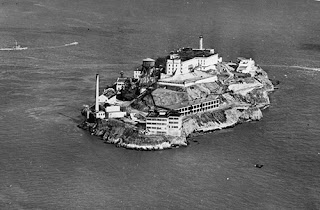Directed by Alfred Hitchcock, "The Birds" premieres in New York. From Bob Thomas of The Associated Press (full link below):
"What's the matter with all the birds?" asks a character in Alfred Hitchcock's new film, "The Birds."
What is the matter, indeed? Sea gulls peck at boaters at Bodega Bay, Calif. Others swoop down on a children's birthday perty. A flight of sparrows invade a house by the chimney. Whole henhouses refuse to eat.
Something's got to give, and it's the humans. The birds come flying at them like a plague of oversized, carnivorous locusts. Anyone who has been swooped at by a nesting mockingbird know what terror that can hold.
* Movie trailer: @
* Script (from dailyscript.com): @
* Entry from Turner Classic Movies: @
* Entry from AMC's filmsite.org: @
* New York Times review: @
* "Hitchcock Goes To The Birds" (Thomas): @
* "The Day of the Claw: A Synoptic Account of Alfred Hitchcock's The Birds" (Ken Mogg, Senses of Cinema, 2009): @
* Earlier post on "Psycho" (June 1960): @
















